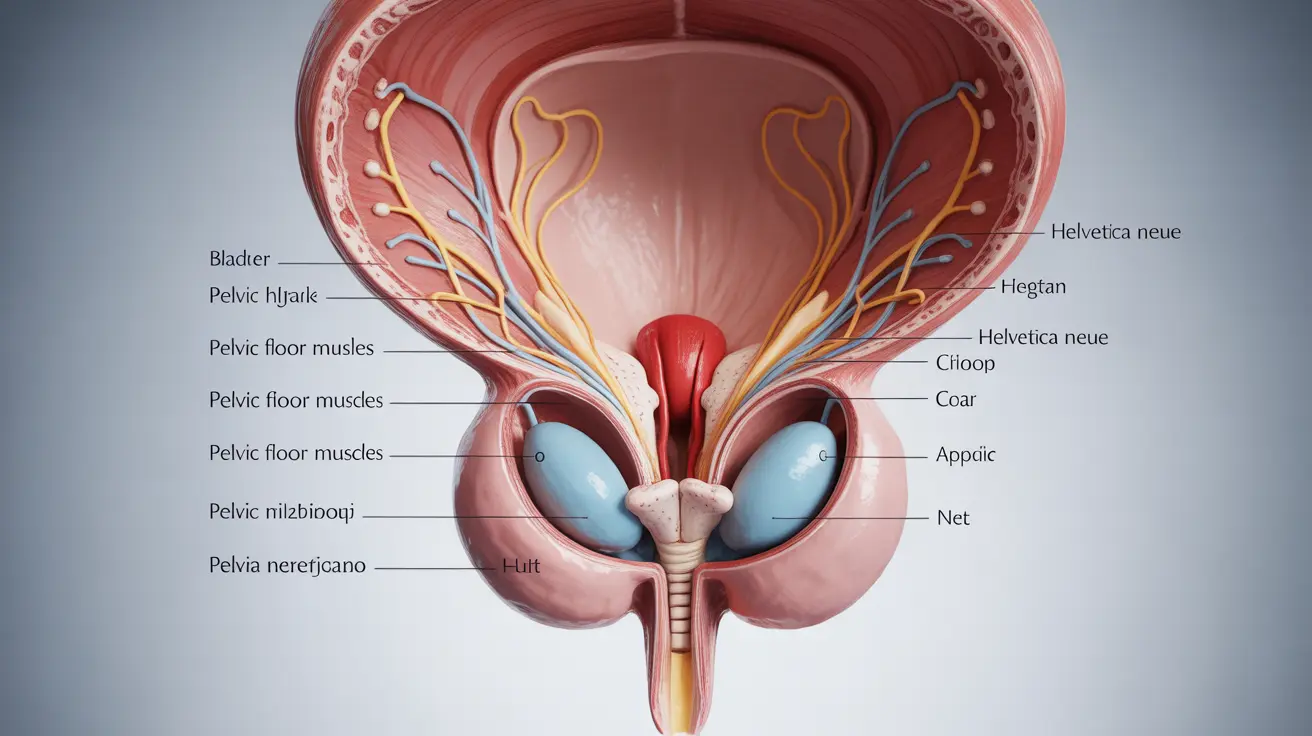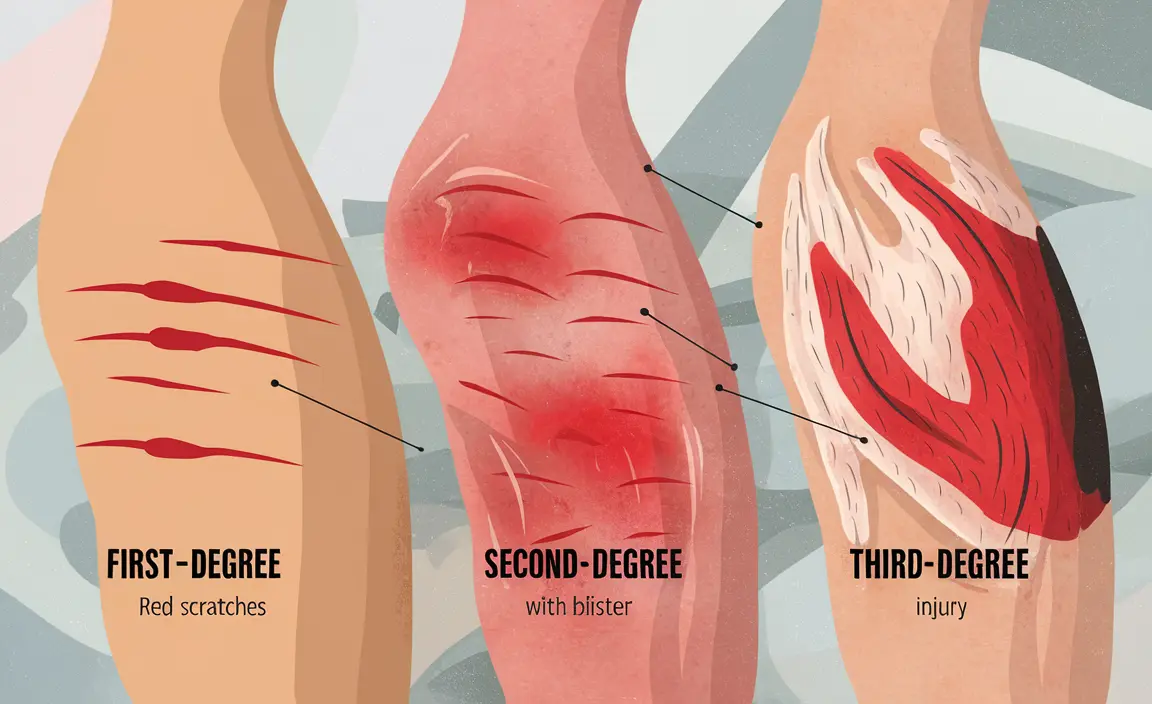Many women have experienced an unexpected pleasurable sensation when holding in urine, leading to confusion and questions about whether this response is normal. This phenomenon involves complex interactions between the pelvic floor muscles, bladder, and surrounding anatomical structures that can create sensations ranging from mild pressure to more intense feelings.
Understanding why this occurs requires examining the intricate relationship between the urinary system and the body's sensory responses. While this experience is more common than many realize, it's important to explore both the physiological mechanisms behind it and the potential health implications of frequently delaying urination.
The Anatomy Behind the Sensation
The female pelvic region contains a complex network of muscles, nerves, and organs that work together to support urinary and reproductive functions. The pelvic floor muscles, which stretch like a hammock across the bottom of the pelvis, play a crucial role in both bladder control and sexual response.
When the bladder fills with urine, it expands and puts pressure on surrounding structures, including the pelvic floor muscles and nearby nerve pathways. This pressure can stimulate nerve endings that are also involved in sexual arousal and pleasure responses. The pudendal nerve, which supplies sensation to the genital area, runs close to the bladder and can be affected by bladder fullness.
Additionally, the proximity of the bladder to the vaginal wall means that a full bladder can create pressure against the anterior vaginal wall, an area rich in nerve endings. This pressure can sometimes trigger pleasurable sensations similar to those experienced during sexual activity.
Pelvic Floor Muscle Response and Pleasure
The pelvic floor muscles serve multiple functions, including supporting the bladder, uterus, and rectum while also playing a role in sexual response. When holding in urine, these muscles contract to maintain continence, creating tension throughout the pelvic region.
This muscular tension can stimulate blood flow to the area and activate nerve pathways associated with pleasure. Some women may notice that the rhythmic contractions of these muscles while holding urine can create sensations similar to those experienced during sexual arousal or orgasm.
The interaction between bladder fullness and pelvic floor muscle activity can also increase sensitivity in the surrounding areas. This heightened sensitivity may make normal touch or movement feel more intense, contributing to the pleasurable sensations some women experience.
Neurological Connections and Sensory Overlap
The nervous system pathways that control bladder function share connections with those involved in sexual response. The sacral nerves, which originate from the lower spinal cord, innervate both the bladder and the genital region. This shared innervation means that signals from a full bladder can sometimes be interpreted by the brain as pleasurable sensations.
Research has shown that the brain regions activated during bladder fullness overlap with those involved in sexual arousal. This neurological overlap may explain why some women experience positive sensations when holding in urine, as the brain may process these signals in a way that feels pleasant rather than merely uncomfortable.
The release of certain neurotransmitters and hormones during periods of bladder fullness may also contribute to these sensations. The body's stress response to holding urine can trigger the release of endorphins, which are natural feel-good chemicals that can create pleasurable feelings.
Individual Variation and Sensitivity
Not all women experience pleasurable sensations when holding in urine, and the intensity of these feelings can vary significantly between individuals. Factors that may influence this response include pelvic floor muscle strength, nerve sensitivity, hormonal fluctuations, and individual anatomy.
Women with stronger pelvic floor muscles may experience more intense sensations due to increased muscle tone and better blood circulation in the area. Conversely, those with weaker pelvic floor muscles might notice different or less pronounced sensations.
Hormonal changes throughout the menstrual cycle can also affect sensitivity and nerve response. Some women may notice that these sensations are more pronounced at certain times of their cycle when hormone levels fluctuate.
Health Risks and Considerations
While experiencing pleasurable sensations when holding in urine may feel normal, regularly delaying urination can pose several health risks. Frequent urine retention can lead to urinary tract infections (UTIs) as bacteria have more time to multiply in stagnant urine.
Chronic bladder stretching from regularly holding large volumes of urine can weaken the bladder muscle over time, potentially leading to incomplete emptying and increased infection risk. This can also contribute to bladder dysfunction and urinary incontinence later in life.
Additionally, the increased pressure from holding urine can strain the pelvic floor muscles and potentially contribute to pelvic organ prolapse, particularly in women who have given birth or are approaching menopause.
If someone finds themselves frequently holding in urine for the pleasurable sensations, it's important to establish healthy bathroom habits and consider speaking with a healthcare provider about pelvic floor health and urinary function.
When to Seek Medical Advice
While occasional pleasurable sensations when holding urine are generally not cause for concern, certain symptoms warrant medical attention. These include persistent pelvic pain, difficulty completely emptying the bladder, frequent UTIs, or any changes in urinary patterns.
Women who find themselves deliberately holding urine frequently or who experience concerning symptoms should consult with a healthcare provider. A urologist or gynecologist can assess pelvic floor function and provide guidance on maintaining healthy urinary habits.
Frequently Asked Questions
Why does holding in pee sometimes feel pleasurable for women?
The pleasurable sensation occurs due to the complex interaction between the full bladder, pelvic floor muscles, and nerve pathways in the pelvic region. When the bladder fills, it creates pressure on surrounding structures and can stimulate nerve endings that are also involved in sexual response. The pelvic floor muscles contract to maintain continence, creating tension that can trigger pleasurable sensations through shared neurological pathways between the urinary and reproductive systems.
Is it normal to experience a pleasurable sensation when holding urine?
Yes, experiencing pleasurable sensations when holding urine is relatively normal and more common than many women realize. This occurs due to the anatomical proximity of the bladder to sensitive areas and the shared nerve pathways between urinary and sexual functions. However, individual experiences vary significantly, and not all women will notice these sensations.
Can holding in pee affect sexual arousal or orgasm in women?
Holding in urine can potentially affect sexual response due to the increased pelvic floor muscle tension and heightened sensitivity in the region. Some women may find that a moderately full bladder enhances sexual sensations, while others might find it distracting. The pelvic floor muscle engagement required to hold urine can increase blood flow and nerve sensitivity, which may influence sexual arousal and orgasm intensity.
What are the risks of frequently holding in urine for women?
Regularly holding in urine can lead to several health complications including increased risk of urinary tract infections, bladder dysfunction, weakening of bladder muscles, and potential pelvic floor strain. Chronic urine retention can cause the bladder to stretch excessively, leading to incomplete emptying and creating an environment where bacteria can thrive. Over time, this can contribute to recurring infections and bladder control problems.
How does the bladder and pelvic floor contribute to pleasurable sensations in women?
The bladder and pelvic floor work together to create pleasurable sensations through several mechanisms. When full, the bladder puts pressure on the pelvic floor muscles and nearby nerve pathways, including areas rich in nerve endings. The pelvic floor muscles contract to maintain continence, creating tension and increased blood flow that can stimulate pleasure pathways. The proximity of these structures to the vaginal wall and the shared nerve supply with sexual organs means that bladder fullness can activate similar neural circuits involved in sexual pleasure.




